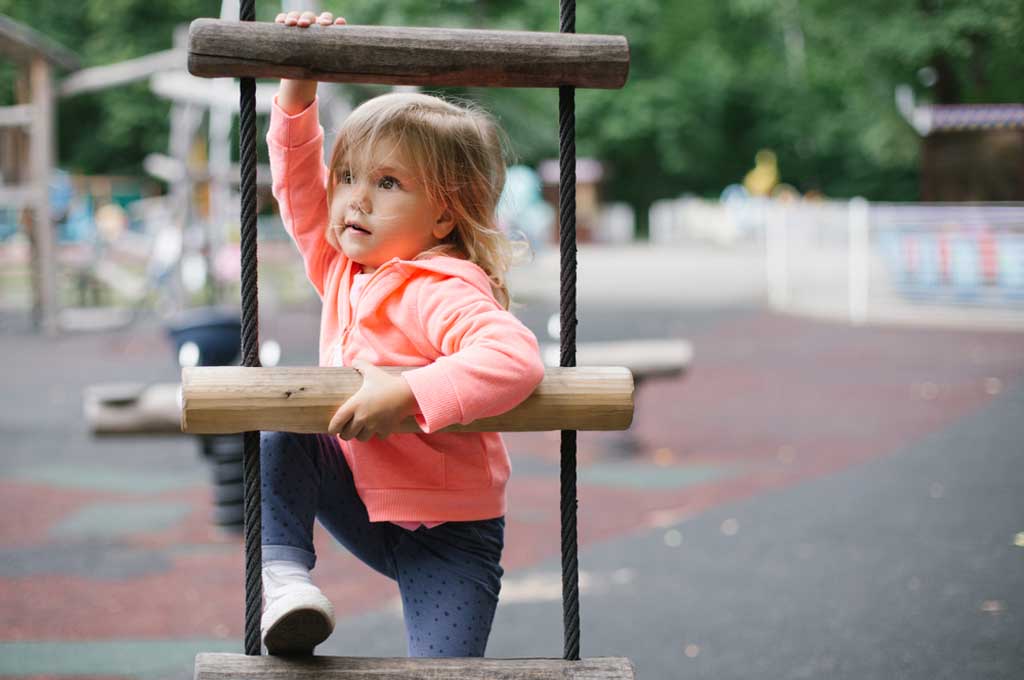Child development occurs at a breakneck speed…especially during the preschool years of ages 3 – 5. This includes physical, or motor, development as your child’s muscles and bones are developing rapidly, and your child grows increasingly proficient at interacting with the world around him or her.
Physical development is divided into two categories: gross and fine motor development. Gross motor development involves the large muscle groups of the body—those in the trunk, or core, of as well as the muscles in the arms and legs. These are the muscle groups that allow babies to hold their heads up and sit upright, and are integral in learning to crawl, stand, walk, run, and skip.
Fine motor skills involve the more delicate muscles of the wrists, hands, fingers, toes, lips, and tongue. These muscles are important for learning to speak, write, and accomplish various self-care tasks like brushing teeth and using utensils to eat.
Parents and caregivers can promote healthy physical development by providing access to toys and games that encourage the use of both gross and fine muscle groups. We’ve gathered a list of ideas that will ensure your child has too much fun to notice they’re building strong muscles.
Gross Motor Strategies
Let Your Child Take the Lead
Any parent knows, the fastest way for a child to avoid playing with a toy is for you to suggest they play with a toy. Rather than directing a child’s play, make toys available that promote the use of large muscle groups. This can include ride-on toys, slides, age-appropriate jungle gyms and climbing toys, balance beams, jump ropes (when age appropriate), and balls and bats.
Make Sure You Have Enough Space to Play
This doesn’t mean you need an expansive backyard. Many gross motor activities can take place indoors (though you may need to move some furniture up against walls to allow for room).
Let your child ride tricycles in large rooms or down long hallways. If you have a circular route through your home, use it as a tricycle course. A bean bag toss is equally fun outdoors or in.
Tossing a ball is probably best done outdoors but sitting on the floor and rolling a ball back and forth is a fun indoor version.
Don’t Forget About Music
Movement with music is a wonderful way to engage in gross motor development. Play your child’s favorite songs and encourage dancing and jumping. You can bring in tools and play aids like hand-held musical devices (maracas, tambourines, cymbals), hoola hoops, and wrist ribbons (we love this set from children Music Toys!) to encourage full-body movement.
Make Physical Play a Priority
Children should enjoy a minimum of 60 minutes of unregulated physical activity each day, and it isn’t an exaggeration to say the more the better.
Fine Motor Strategies
Variety is Key
As was the case for gross motor skills, having a variety of toys available is key in allowing children to direct their own fine motor play. Allow children access to items like puzzles, blocks, hand and finger puppets, lacing cards, and age-appropriate beads for stringing.
Ensure Success
Play time is sure to end when children feel unsuccessful and frustrated. Stay close by to help children solve problems during fine motor activities. For example, if your child is unable to string beads on a lace, lead them to the realization why. Perhaps there is a knot in their lace, or they are trying to start with the knotted end that holds the beads in place.
Build Fine Motor Activities into the Daily Routine
While gross motor activities involve big, full-body movements, fine motor activities are more stationary and often require greater focus. This makes them the perfect relief after a busy gross motor session.
Try adding variety to your child’s day by moving them between gross motor and fine motor play. And don’t forget to schedule rest or nap time…that’s important for everyone.
Don’t Forget the Face
Working the fine muscles of the face and mouth is easy when you engage in a game of silly faces. Give your child a mirror and challenge them to see who can make the silliest face. Puckering lips, sticking out the tongue, and smiling wide all help exercise the fine muscles in the mouth and tongue.
And who doesn’t love to blow bubbles? Bubble blowing is both engaging and great for exercising the face.
When it’s time to take a snack break, offer your child a beverage with a straw. Pulling liquid through a straw is another way to strengthen facial muscles.
Parents and caregivers play a key role in getting children to engage in play that enhances physical development. The more you participate in play with your child, the longer your child is likely to play, and the better exercise those large and fine muscle groups receive. It truly is a win/win for all involved.
For any more information, call Clovel Childcare and Early Learning Centre, don’t hesitate to get in touch with us. For any information about our Educational Programs, give us a call at 02 9199 0294 or fill in this contact us form.
Thanks for reading,
Clovel Childcare
1300 863 986












